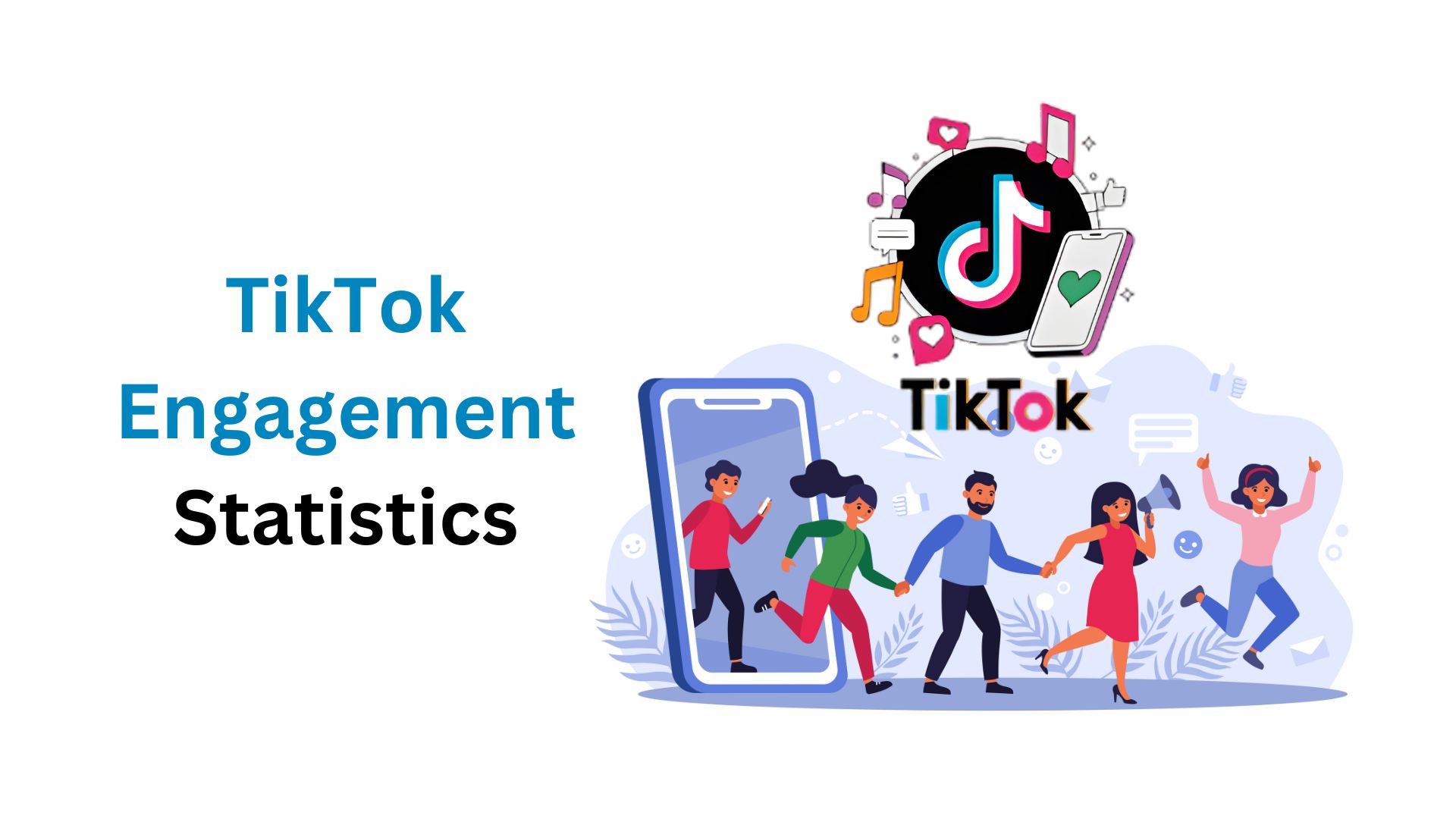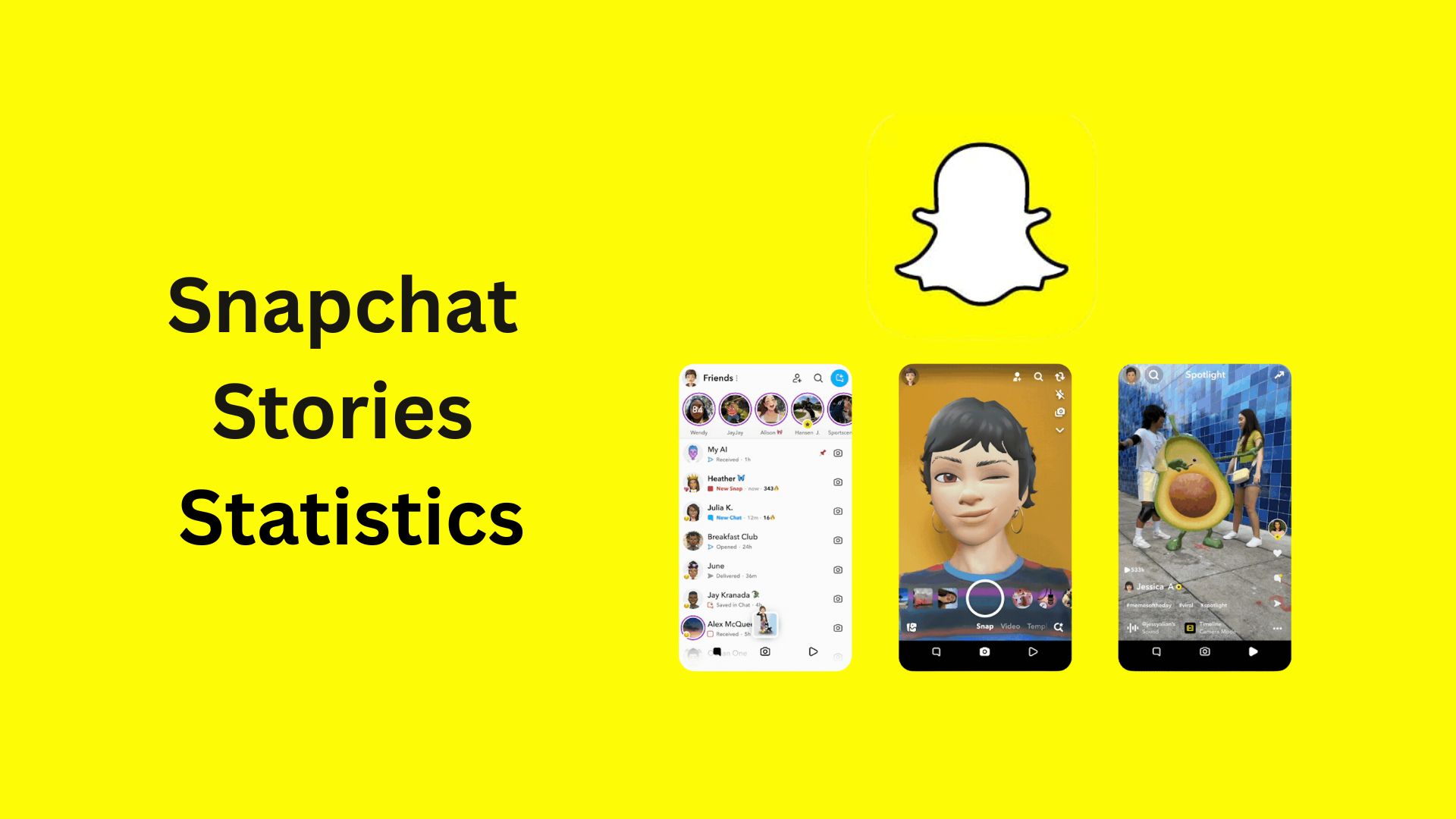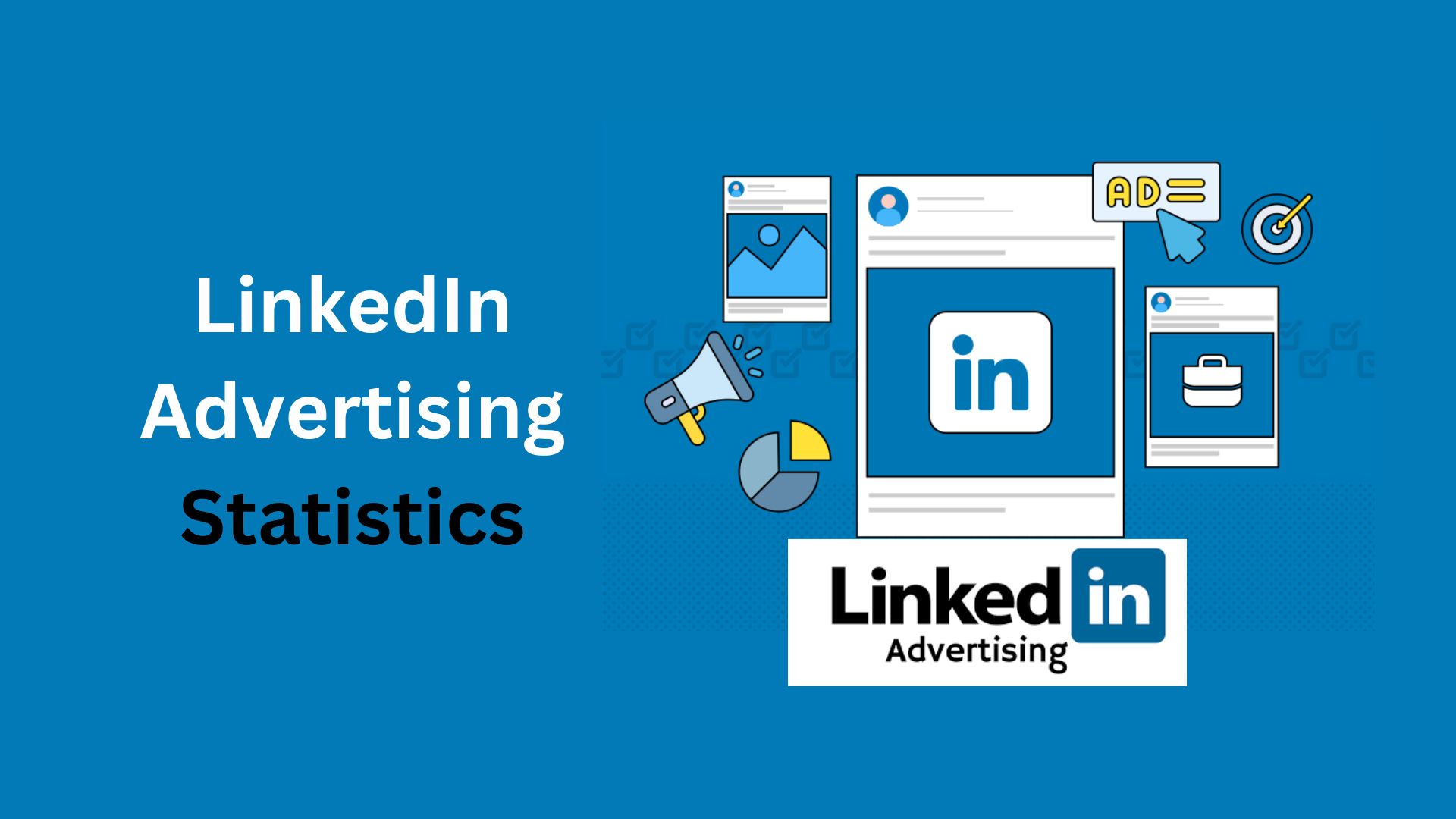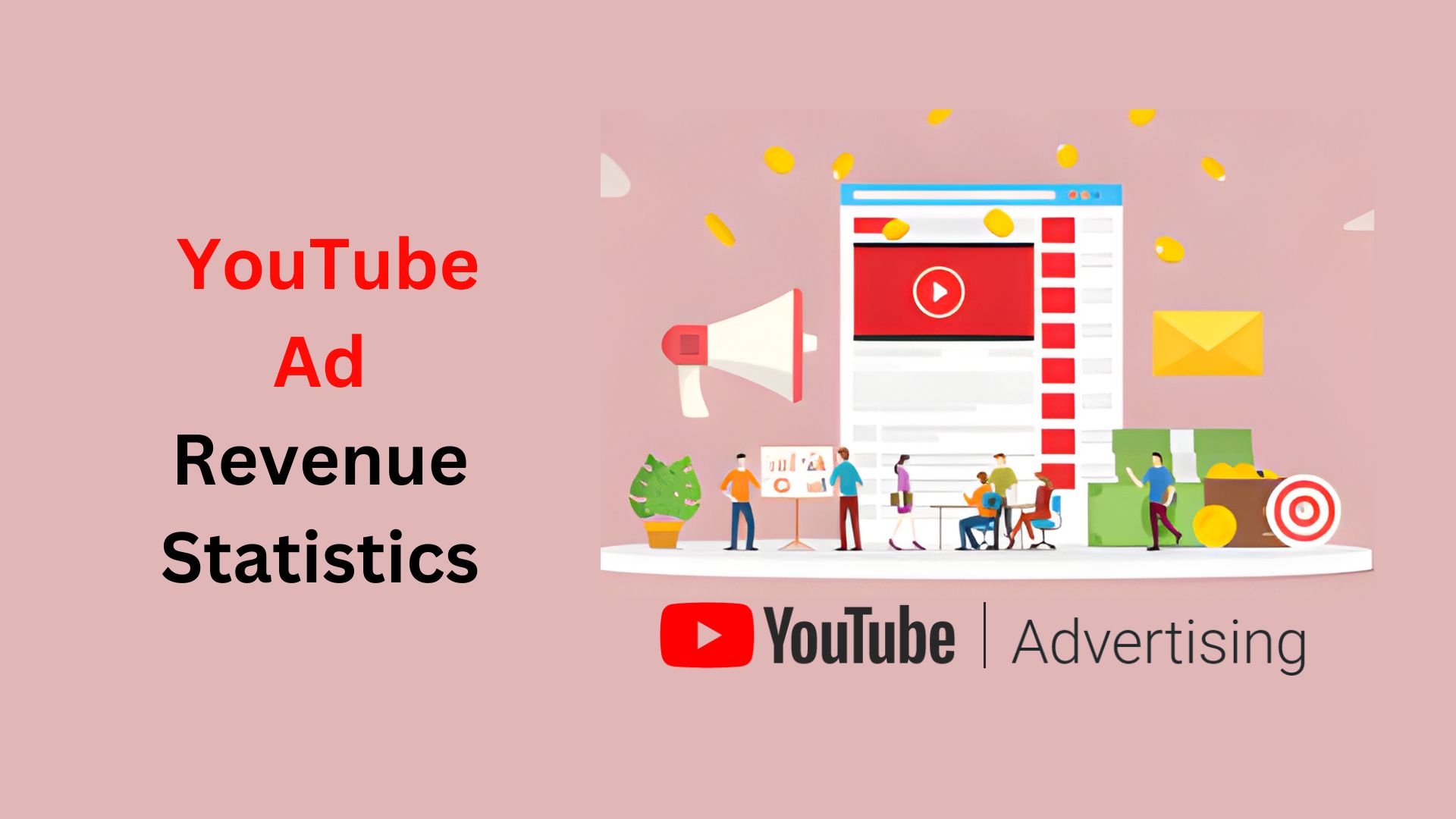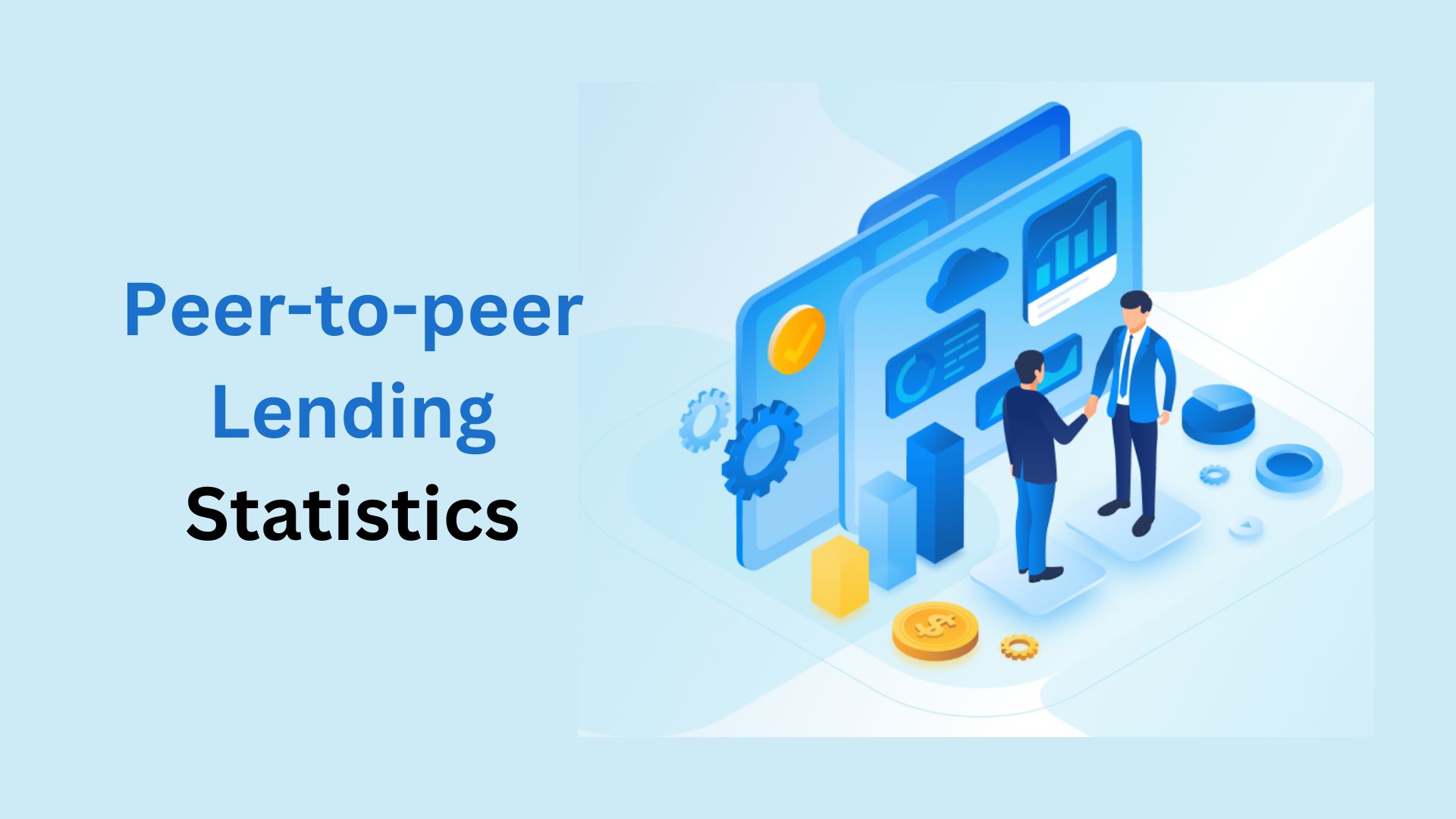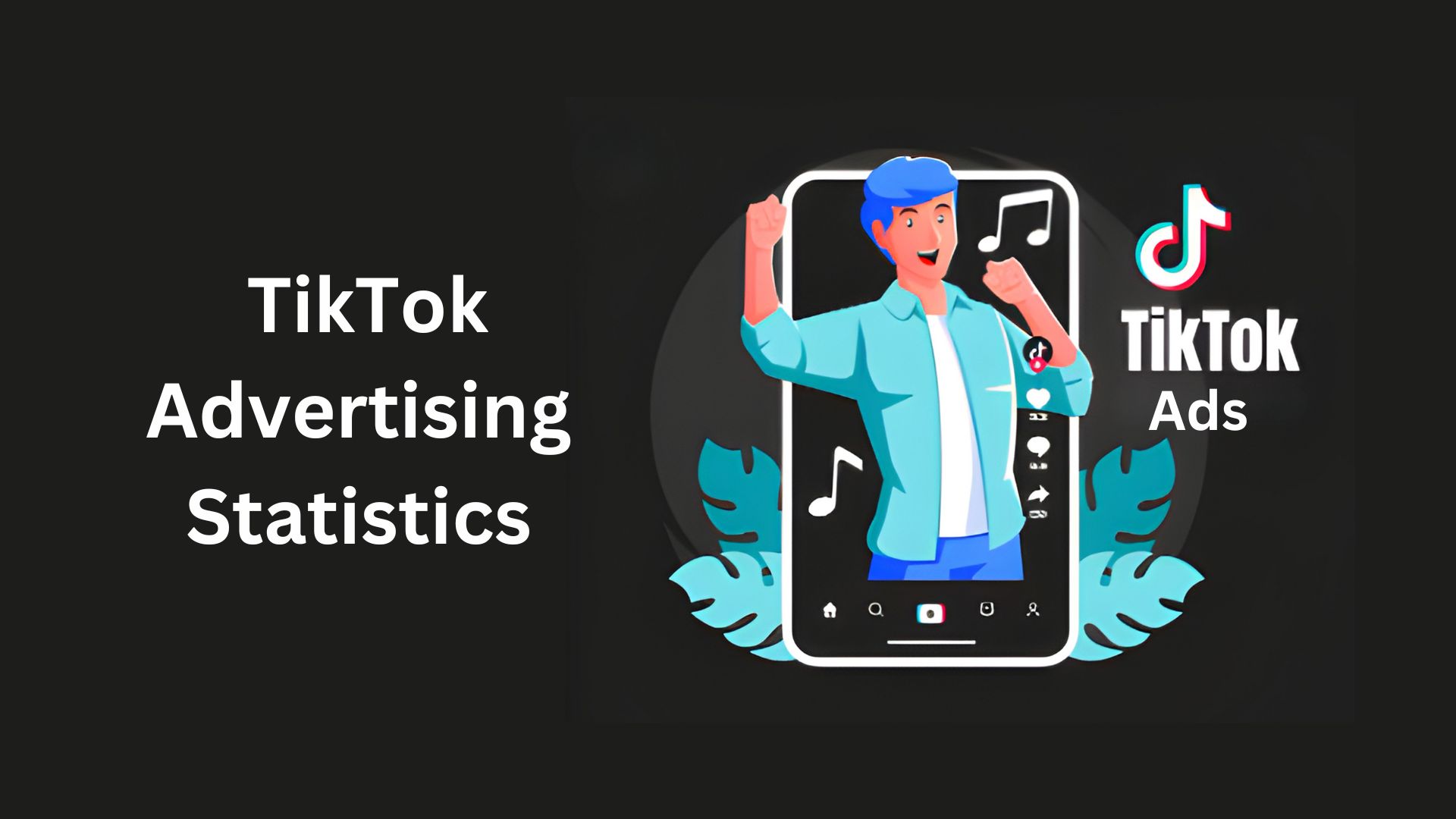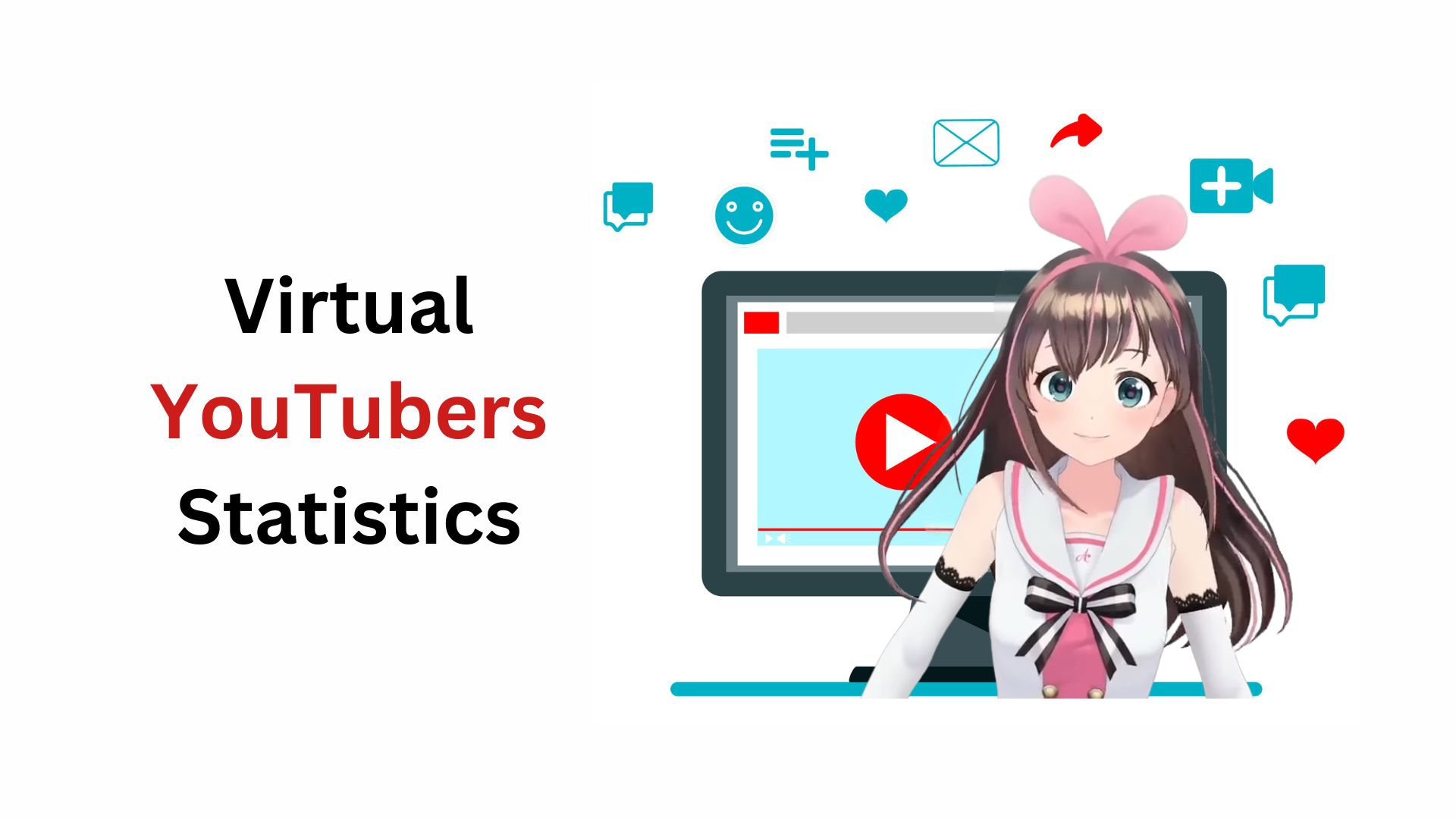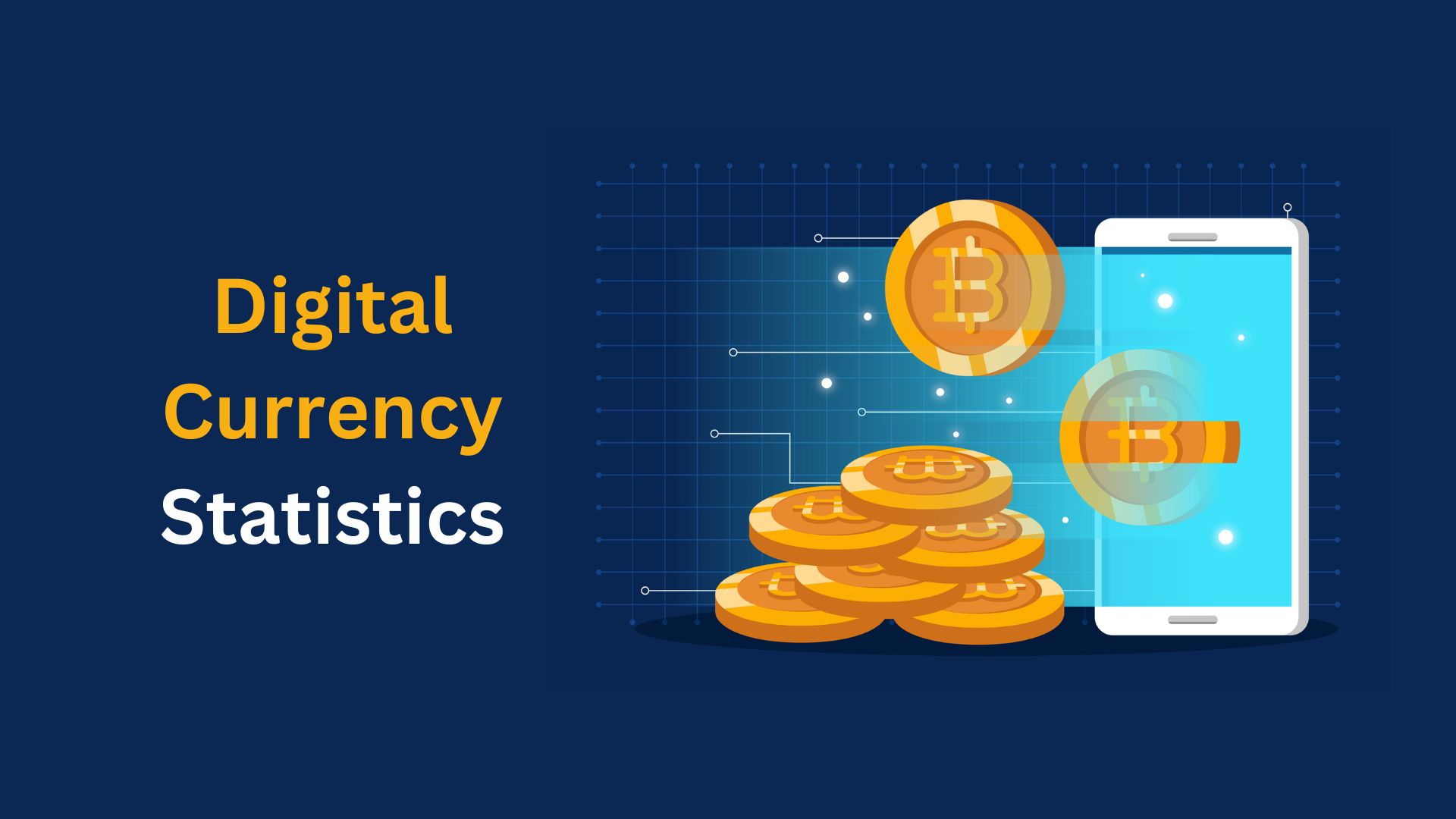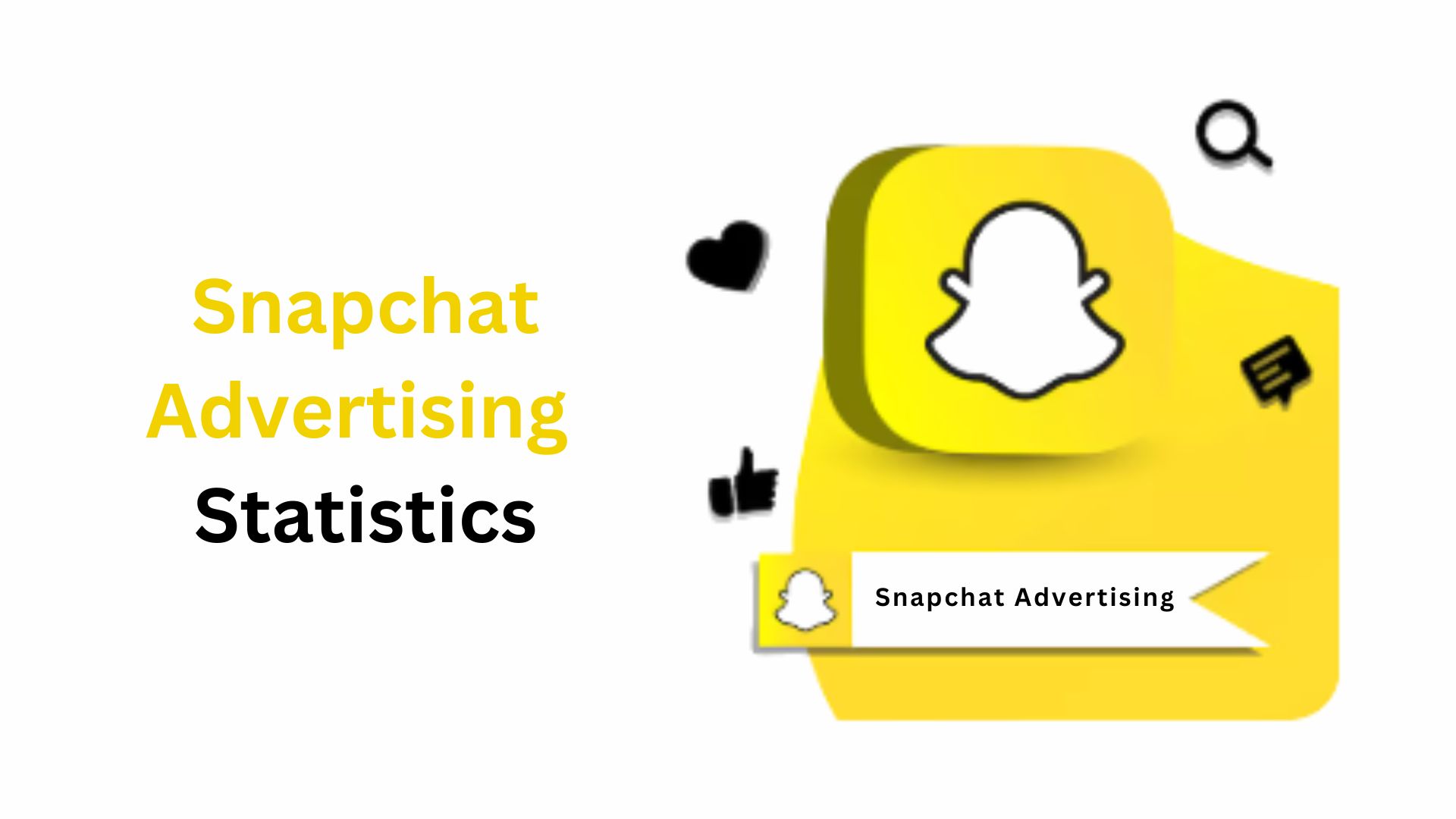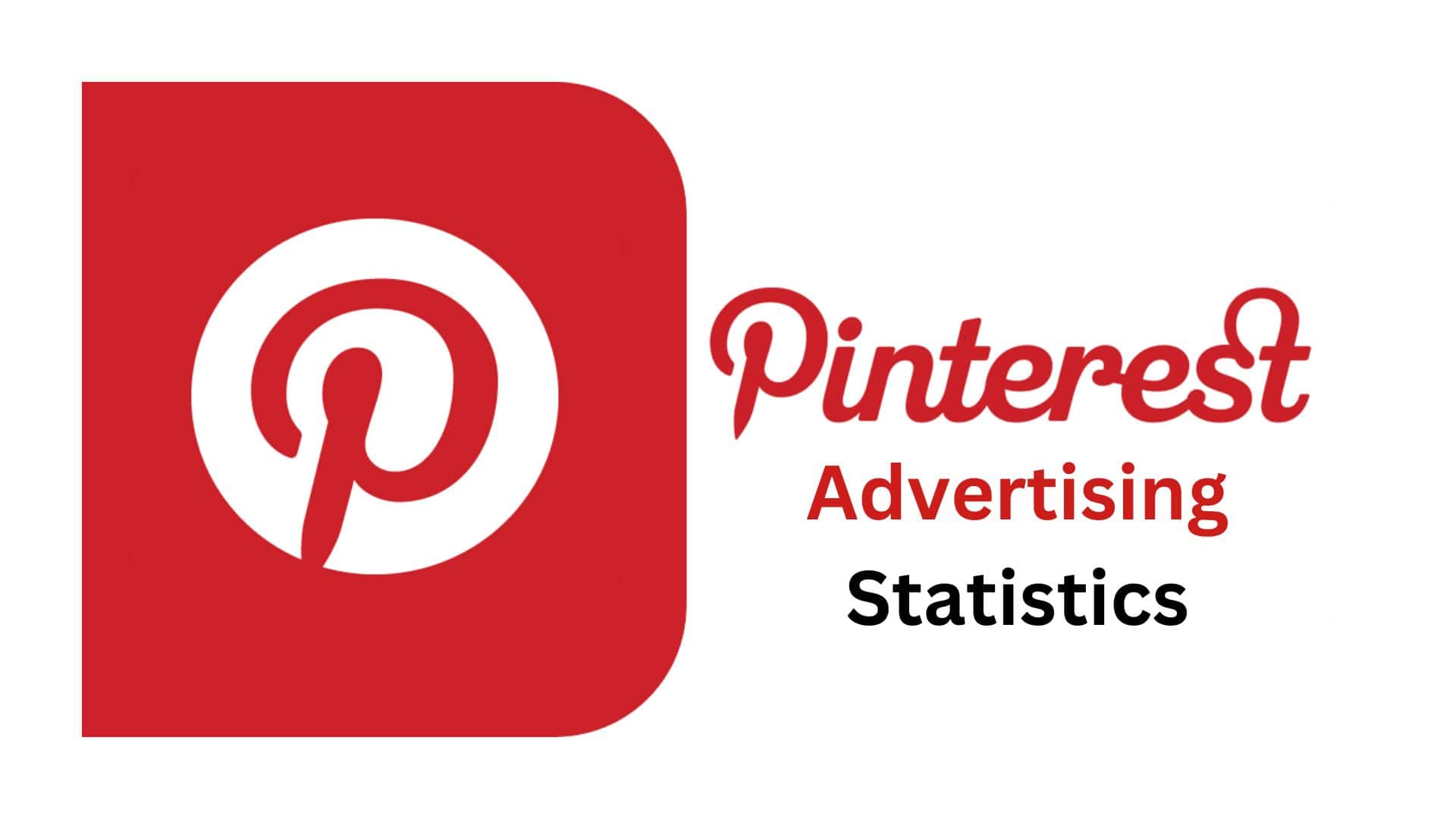Landing Page Statistics By Users, Testing, Types And Facts (2025)
Updated · Nov 25, 2025
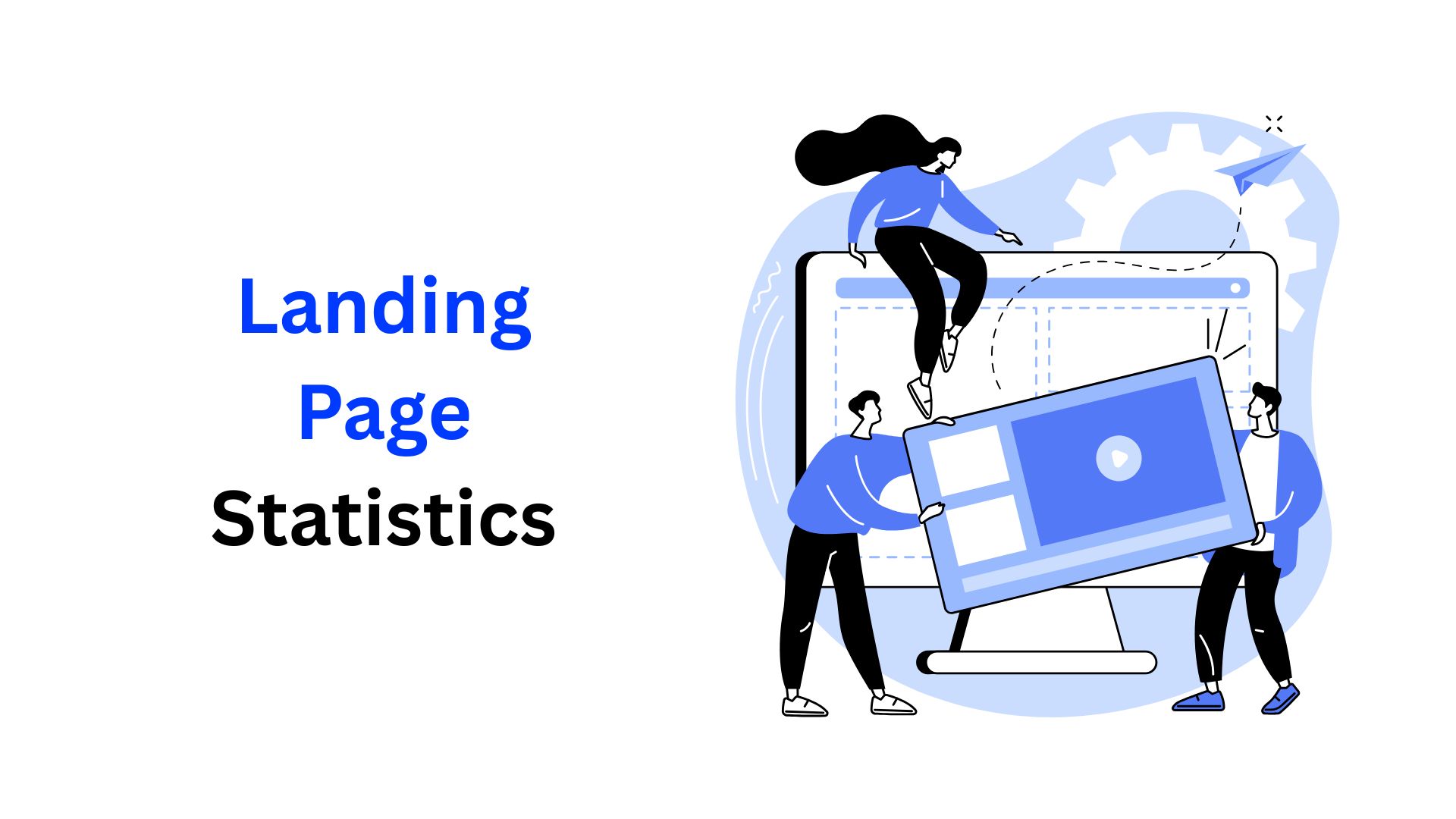
Table of Contents
- Introudction
- What is Language Page Statistics?
- Editor’s Choice
- Landing Page Conversion Rates By Industry
- B2B Landing Page Statistics
- Landing Page Design And User Experience (UX) Statistics
- Landing Page Design
- Social Media Traffic On Landing Pages
- Types of Landing Pages
- Landing Page Testing Statistics
- E-Commerce Landing Pages – Conversions And Sales
- Conclusion
Introudction
Landing Page Statistics: Want to know what turns an effective landing page? In this article, we are going to explore what the latest landing page statistics have revealed as common factors in top-performing pages. We’ll look at what makes a landing page work and what kind of content drives conversions.
We’ve gathered Landing Page Statistics from several studies and arranged that information into easy-to-understand sections —including landing page design and strategy, and general trends.
What is Language Page Statistics?
A landing page is a stand-alone webpage built for marketing or advertising. It is a page that potential customers arrive at after clicking an ad or a promotional link. It is meant to persuade the visitor to take a specific action, such as signing up, purchasing, or filling out a form-the visitor is now a lead or customer.
As the competition becomes tougher, especially in a fast-moving industry such as tech, in which such superstar rivalry from iPhone and Android grabs attention, marketers get stretched to the limit in their efforts to refine and optimise landing pages. By studying statistics on landing page performance, businesses can gain valuable insights into how to make these pages more effective and achieve marketing results.
Editor’s Choice
- The average landing page conversion rate across industries is 6.6%, with shorter pages and clear CTAs performing 13.5% better.
- B2B landing pages put up an average conversion rate of 13.28%, especially if those leads have been generated through webinars.
- Increasing the number of landing pages from 10 to 15 can hike the leads by 55%, while having upwards of 40 pages can amplify the leads by 12 times.
- Great landing pages with flawless navigation and UX see a conversion rate uplift of 400%.
- Dynamic pages optimised for mobile convert 25.2% more mobile users, while poor UX chases away 88% of visitors.
- Clickable graphics are used in 58% of landing pages, with images of people increasing click-through rates by 66%.
- Trust signals such as logos and security badges make 48% of consumers feel reassured, while mobile optimisation is crucial for 86% of top-performing pages.
- For 51.5% of marketers, social media is a source of traffic. Another 43.6% use email marketing. SEO accounts for only 35.6%.
- 30% of businesses use AI for testing and optimisation. While adoption of AI is on the rise, 92% of companies expect to increase their investment in the technology by 2025.
- Though A/B testing is much more effective than anything in the conversion toolkit, over half of companies do fewer than 5 tests in a month.
- Conversion-focused testing can yield a 300% lift in conversion rate.
- On any Ecom platform, 49% of shoppers begin and finish their shopping on the platform itself, 70% use smartphones to shop, and 82% say videos influence their buying decisions.
- Using authentic images and straightforward CTAs can literally make a mark in conversion rate; for instance, about a 161% lift in form submissions was observed when a simple stock photo was replaced with an authentic image.
Landing Page Conversion Rates By Industry
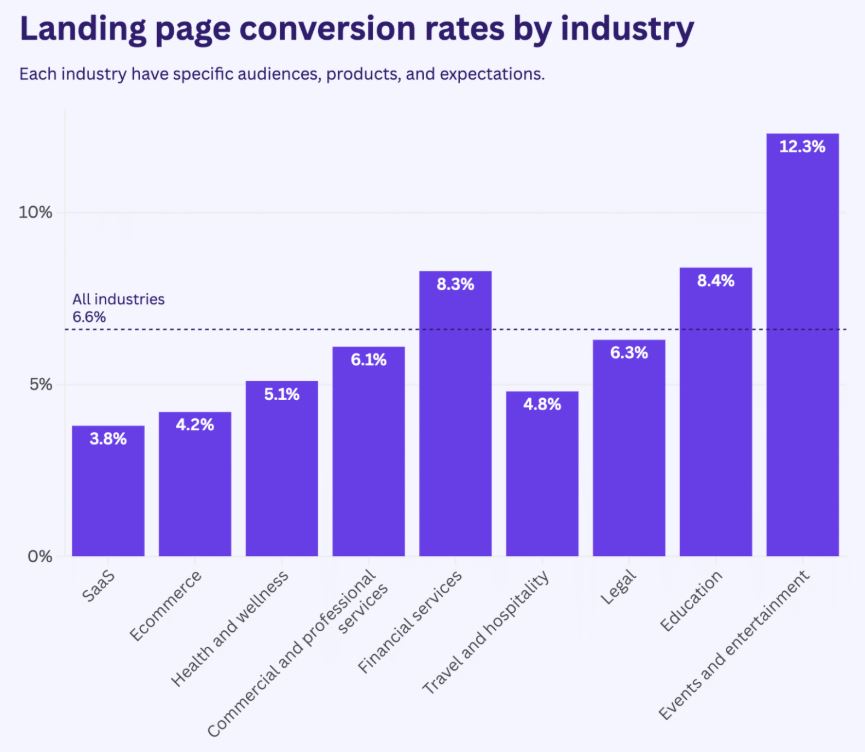
(Source: hostinger.com)
- Short landing pages featuring unambiguous calls-to-action convert better by a margin of around 13.5%, suggesting that straightforward action-oriented designs tend to produce more conversions.
- Creating landing pages for lead generation remains among the key objectives for nearly half of the marketers figure stands at 43.6% as per HubSpot.
- More landing pages do indeed equate to more leads. In fact, just an additional five pages-from 10 to 15-have helped bring about a 55% increase in leads, since the more pages you have at your disposal, the easier it is to target certain audience segments.
- Social media can never be forgotten here: 51.5% of marketers perceive it as an effective channel for sending traffic to landing pages, while also aiding in brand awareness and capturing potential leads.
- Conversion rates differ by industry. For example, SaaS gets a conversion rate of approximately 3.8, and e-commerce tends to convert at about 4.2%.
- Health and wellness pages convert a bit better than 5.1%, and commercial or professional services convert around 6.1%.
- Financial services at 8.3% are another average, and travel and hospitality pages convert at 4.8%. Legal services hit above 6.3%, education is performing well at 8.4%, while events and entertainment boast the highest rate at 12.3%.
- Even though it speaks volumes about how audience expectations and industry type strongly influence landing page success, these differences still exist.
B2B Landing Page Statistics
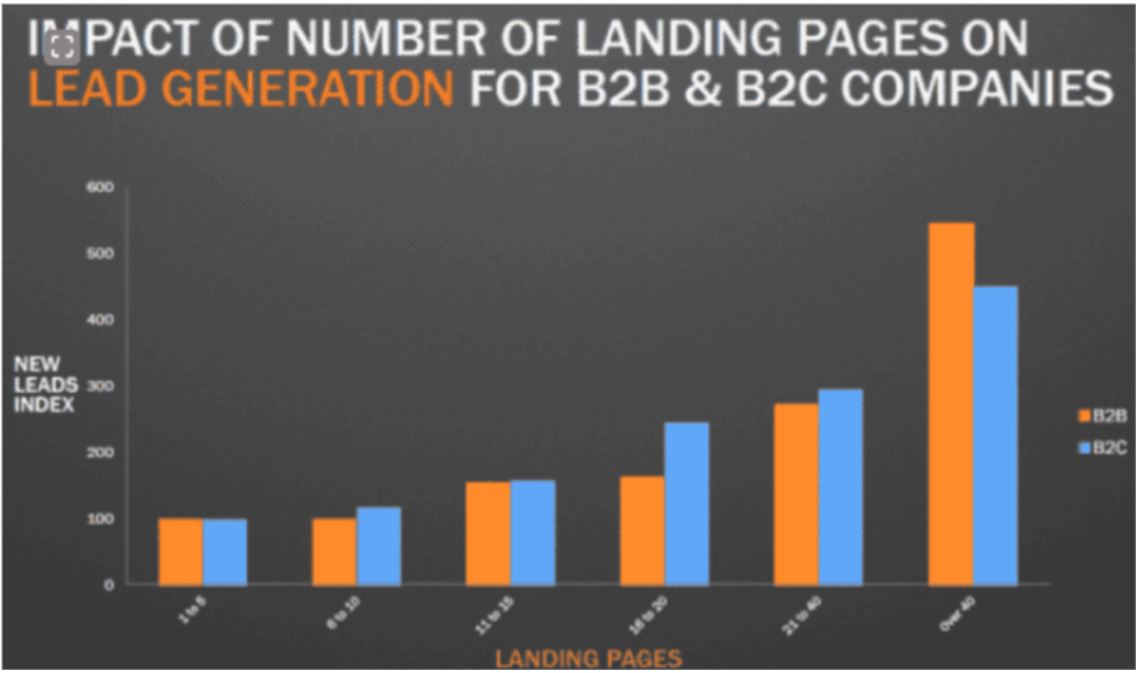
(Source: coolest-gadgets.com)
- B2B landing pages score a solid average conversion rate of 13.28%, with great leads generated directly from webinars, which remain prime methods for enticing qualified prospects.
- Among elite B2B content marketers, 64% have successfully led an audience into genuine leads or subscribers, a much stronger count compared to the 49% reported across all marketers.
- Almost 67% of the B2B organisations affirm that the landing pages’ conversion rate reflects the true worth of their content, and so conversion remains a meaningful measure of success.
- A competitive edge is also contributed by page speed—if a B2B site can finish loading fully in one second, its conversion rate stands three times higher than that of a competitor’s page, which takes five seconds to load.
- More than 91% of B2B professionals like to keep learning through webinars; thus, landing pages promoting webinars perform exceptionally well in generating quality leads.
Landing Page Design And User Experience (UX) Statistics
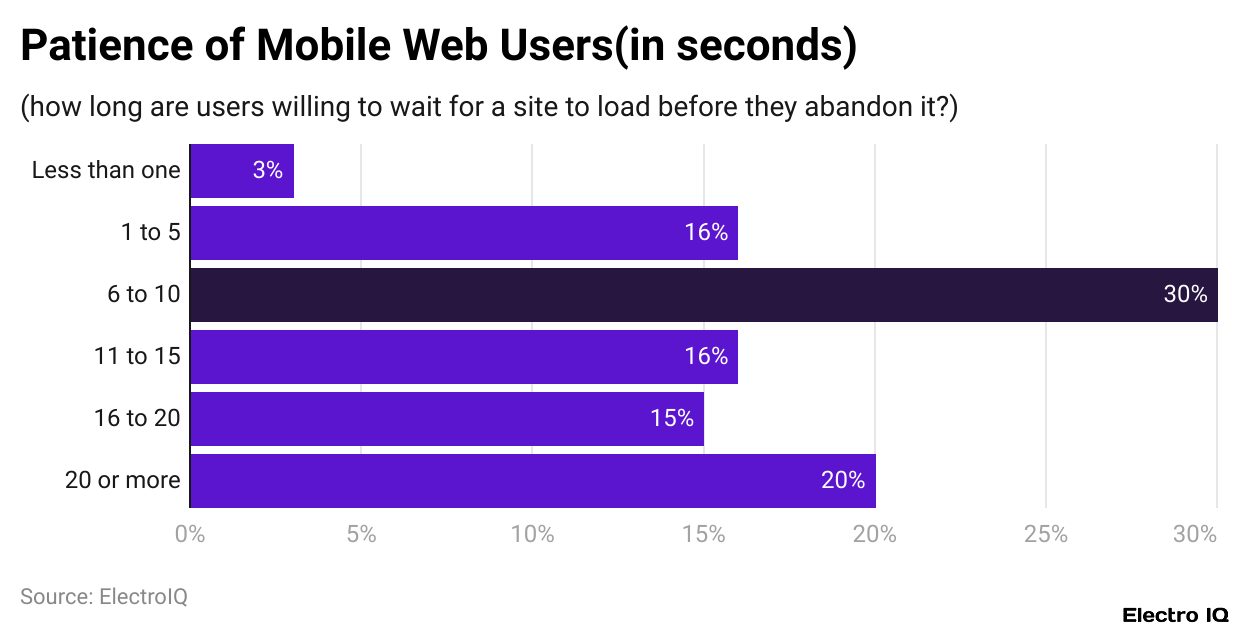
(Reference: hostinger.com)
- The smooth navigation and appealing design go a long way in shaping a great user experience; landing page performance, here, can actually suffer or thrive as a result of this.
- A landing page with good design could increase conversion rates by 400% simply; the clear navigation, fewer steps, and alignment with the user’s expectations are setting visitors to act.
- Speed is critical as well: an estimate says that 30% of users leave any page that takes more than six to ten seconds to load.
- Dynamic profile pages that adapt to the user’s needs convert 25.2% more mobile users, mainly because visitors stay engaged due to interactive and clickable elements.
- A bad user experience is even worse: 88% of people say they will never return after a bad experience caused by awkward designs, glitches, or technical issues at hand.
- 23% of users will share the experience with a minimum of ten other people, giving businesses much more mileage through word-of-mouth and online communities.
- This proves that good UX on its own can produce good conversion rates, sustain long-term relationships, and create an increase in the goodwill and goodwill of the brand.
Landing Page Design
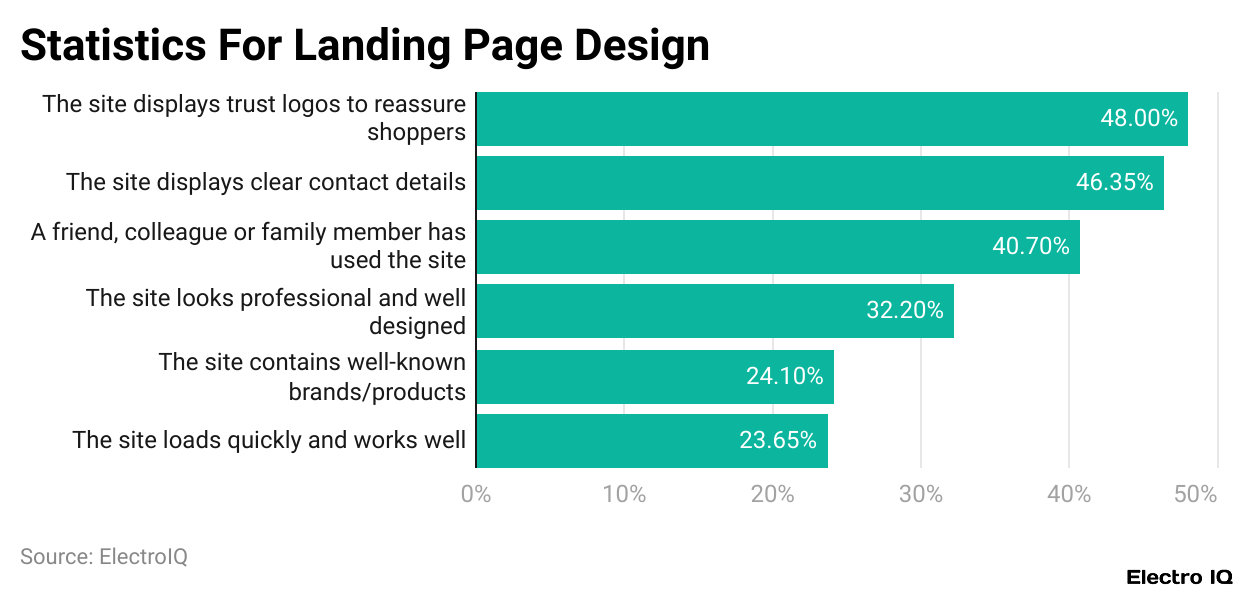
(Reference: vwo.com)
- The majority of landing pages, about 58%, have clickable graphics related to the content, making the pages engaging and interactive.
- A major trust factor for visitors is logos and security badges; 48% say that trusting logos and security badges makes them feel safe to browse or submit information on a site.
- Mobile optimisation is considered utmost as 86% of the best-performing landing pages are fully designed for mobile users.
- The imagery used is also important. Pages that show pictures of people have 66% more click-throughs than pages that only show pictures of things.
- Colours are something that can also contribute, boosting brand recall by as much as 80% and comprehension by 73%, thus making content more memorable and easier to comprehend.
- Real visuals can have an even greater impact: A truck driving school increased form submissions by 161% just by replacing a generic stock photo with a real photograph of one of their students.
- These details denote how design elements, trust signals, and genuine imagery differ in their influence on a landing page’s performance.
Social Media Traffic On Landing Pages
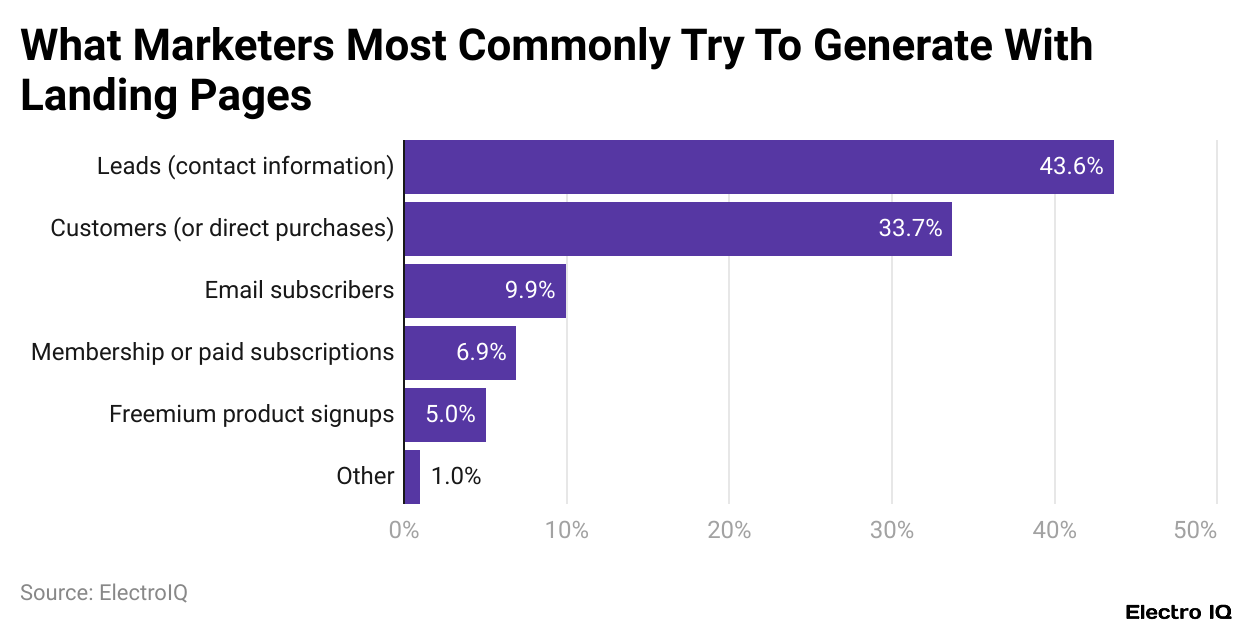
(Reference: hostinger.com)
- As per Hostinger, landing page statistics state that 51.5% of marketers claim that it is one of the most effective strategies for audience engagement.
- Email marketing is the second-most-powerful tool, which 43.6% of marketers are utilising to market their landing pages, while 35.6% are depending on SEO for attracting guests there.
- Simultaneously, businesses need not solely rely on external platforms for increasing traffic. On-page methods such as inserting internal links inside blog posts or using site-wide banners may be equally useful in driving users to sales pages and thus increase engagement.
- Artificial intelligence has become a drop in the bucket for landing page optimisation, giving creative teams some time for designing and copywriting.
- Roughly 30% of the companies are already utilising AI to augment testing and optimisation by using AI’s capabilities in optimising experiments, automating workflows, and rendering deeper insights into visitor behaviour.
- 42% of organizations rely on AI capabilities like chatbots and predictive analytics, which indeed nurture customer service and provide ways to simplify the often cumbersome data analysis to aid decision-making processes.
- The increase by 50% in AI website-building adoption within the last year is a testament to how fast the business community is taking up AI in the creation and enhancement of web pages.
- Nearly 92% of the companies plan to pump more funds into AI by 2025, in step with the widening influence of AI in marketing, software development, and business operations.
- More than 40% of business leaders have cited an increase in productivity with the assistance of AI-driven automation.
- To ensure optimal outcomes, organizations ought to establish clear goals, measure their progress, and reinforce critical thinking development amongst their team members so that AI stays an assistive tool rather than one for replacement.
Types of Landing Pages
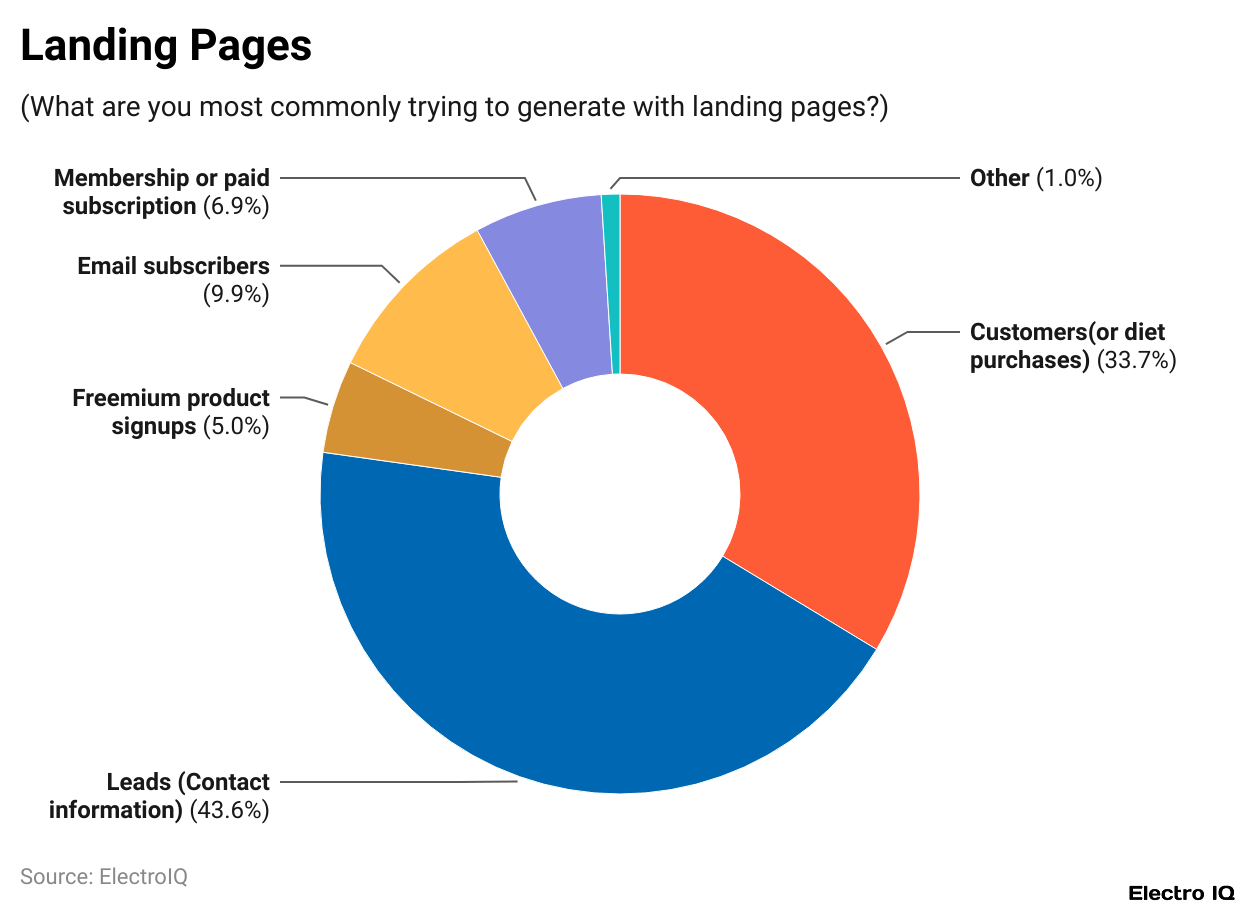
(Reference: coolest-gadgets.com)
- As per Coolest Gadgets, landing page statistics show that creating and managing multiple landing pages requires different huge effort, but the results are very rewarding.
- Many brands still operate with less than six landing pages, while companies managing 15 or more lead to a growth of 55% in lead generation.
- Businesses with 40 or more landing pages can see the lead generation increase up to 12 times compared with those that only create one to five landing pages, showing the value of ramping up landing page creation efforts.
- Artificial intelligence has also begun to change marketing, with the AI market forecasted to experience a 32.8% CAGR between 2022 and 2030.
- These AI tools help companies improve their productivity by allowing them to build compelling websites and landing pages.
- On the other hand, interactive widgets, such as 3-D or complicated animations, increase the engagement level of digital experiences, thus keeping paint-peepers interested and creating higher chances of conversion.
Landing Page Testing Statistics
- Once the landing pages are made live, it is a definite approach to testing them to maximise their effectiveness.
- More than 20% of firms using landing pages confessed that they do not have a good testing system, thereby making it difficult to determine what works and what doesn’t need improvement.
- Time and money must be invested in the proper testing in order to raise conversion rates.
- Known as split testing in some circles, A/B testing is considered one of the most important and popular ways of optimising landing pages, with about 60% of businesses rating its effectiveness as high.
- It provides businesses with an opportunity to experiment with different versions of a page, identify those elements that contribute to conversions, and exclude those with insignificant or no effect.
- Judicious testing and targeting almost always result in superior performance, and reports have been suggesting conversion enhancements of 300% when changes were made based on insights garnered from data and segmenting audiences.
- More than half of the companies are running fewer than five landing page tests in a month, with only a few getting into aggressive testing strategies.
- With fewer testing runs, there is less chance for a business to achieve the full spectrum of optimization.
- In comparison, thousands of tests are regularly run on a single page by Google to identify the finest copy, design, and layout.
- The more you test systematically and frequently, the greater the increase in conversions you can achieve, which makes it an indispensable component of landing page strategy.
E-Commerce Landing Pages – Conversions And Sales
- Landing pages serve as one of the crucial marketing tools for an e-commerce store, as they direct visitors through the purchasing process to influence the sales outcome.
- With the help of statistics relating to e-commerce, user behaviours, and market trends, landing pages can guide businesses in making strategic decisions that lead to maximised output.
- Almost half (49%) of the customers complete their shopping journeys entirely on retailer websites or apps, and therefore, the user experience has to be flawless.
- Simple landing pages with one focused call-to-action convert 13.5% better, demonstrating how simplicity and focus work.
- Customer-support-related conversions exist as well: 47% of shoppers want live-chat support, so implementing chat features could bring more trust and sales.
- Also, mobile optimisation is another important factor; thus, 70% of shoppers prefer to shop via their smartphones.
- Mobile-friendly landing pages are essential to achieve e-commerce success. In addition, videos are also quite influential since 82% of consumers report that videos influence purchase decisions.
- Videos exhibit great importance during the decision-making phase by engaging, informing, and persuading shoppers to buy.
Conclusion
Landing Page Statistics: Landing pages remain one of the most powerful tools to generate leads, conversions, and sales by 2025. Effective landing pages are concise in design with clear calls-to-action, mobile-friendly, captivating in visuals, and focused on user experiences. Usage of AI, A/B testing, and dynamic content increases performance; yet, multiple landing pages and good UX maximise results. The success rate of industries and audience behaviours becomes essential to concentrated strategies.
In e-commerce, mobile-friendly pages, videos, and live chat heighten visitor engagement. By applying this knowledge, businesses can further optimise their landing pages for maximum conversions, building customer trust, and furthering growth in both B2B and B2C markets.
FAQ.
Across industries, the average landing page conversion rate stands at 6.6%. B2B landing pages with webinars in particular get higher conversions, at 13.28%.
Good landing page designs with intuitively smooth navigation, clear CTAs, engaging imagery, and effective loading times can increase conversions fourfold. Poor UX accounts for 88% of visitors walking away.
Mobile optimisation is great and vital for you. With 70% of shoppers e-commerce through smartphones, 86% of the best landing pages are entirely mobile responsive. Dynamic, interactive landing pages increase conversions among mobile users by 25.2%.
It shores up design, copy, and testing. 30% of businesses today harness AI for optimization, chatting, and predictive analyses, thereby allowing increased productivity and deeper analysis of traffic behaviour.
Since A/B testing, among others, reveals which elements elicit conversions, proper testing rewrites would increase conversion rates by 300%, but half of those companies run five tests or fewer a month.

I hold an MBA in Finance and Marketing, bringing a unique blend of business acumen and creative communication skills. With experience as a content in crafting statistical and research-backed content across multiple domains, including education, technology, product reviews, and company website analytics, I specialize in producing engaging, informative, and SEO-optimized content tailored to diverse audiences. My work bridges technical accuracy with compelling storytelling, helping brands educate, inform, and connect with their target markets.

